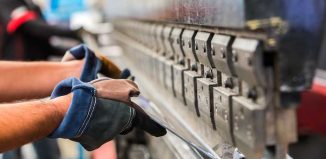If you have more than a few tools lying around in the garage, workshop or boot of your car, you might want to consider getting a dedicated tool storage kit. Why? Because, all those tools will be better organised, and you’ll know where everything is, every time. No more looking around for that spanner, hammer or screwdriver that you need right now. This means no lost, damaged or tools gone awol. Besides this, having more tools means you’ll want something that safeguards your investment throughout the years.
Neat storage solutions like tool cabinets, chests and boxes keep all your tools safe, secure and in designated places. What’s to consider is how you want everything stored.
Getting Tools in Their Place
There are a few questions you’ll need to answer. First is the number of tools you have. This will determine the type and size of tool storage you’re after. Next is where the tools will be used. If it’s a workshop, then you have the option of both fixed or portable storage kits. If you need the tools always with you, then a smaller toolbox might do the job better. For typical Australian circumstances, a neat solution is a ute toolbox that packs that much more, and is mobile at the same time. In fact, mobility and portability are factors that speed up workflow. And lastly, do a rough estimate on how much your tools are worth to ensure they’re protected at all times. Answers to these questions should narrow down what tool storage option is the best for your needs.
What’s on Offer?

There’s a huge selection to store everything. Larger tools chests and cabinets work in multiple settings, smaller toolboxes will carry the necessities, and ute toolboxes work if you’re regularly doing jobs at some distance. If work is tied to a workshop, then these options, along with workbenches, pegboards, and shelving should get you organised. Most working pros will have all or most of these. The avid DIY-er or hobbyist can get by with much less.
Why Consider a Tool Cabinet or Tool Chest?
More tool means more storage capacity and space. Better-built tools chests and cabinets also up safety and security, with neat compartments sorting out bigger and smaller tools for better visibility and access. And locks to keep away sticky hands. There’s also the issue of durability. You’ll want your tools to last, and your tool chest and cabinet that stores them as well. Both can be optioned with castors or wheels when they need to be moved around.
What to Look for in Tool Chests?

Storage Capacity and Size
Differently sized tool chests and cabinets, both in terms of overall height and width, means that these will fit the allotted spaces in different ways. Workshops will have at least one, but space considerations arise when there are more tools that need to be stored. Consider getting a larger tool chest if the number of your tools is limited, and you still plan to grow your toolkit. Or smaller and multiple chests that will store different types or brands of tools. The aim is to better arrange work and increase productivity at the same time.
Internal Organisation
The number of drawers, internal shelves and any nooks for the fiddly stuff like fasteners help get a cleaner look. Ideally, bottom drawers will be bigger and with reinforced floors to store larger and heavier tools. Top drawers, on the other hand, will be meant for smaller items, like spanners and screwdrivers and any tools that you’ll be using more often. Combo boxes, with detachable top parts, work best in this respect. Go for sliding drawers with smooth opening and closing mechs rolling on heavy-duty bearings to avoid any damage or mishaps.
Also, consider the size and arrangement of shelves, the weight they’re rated for and that they have the ability to accommodate accessories like hooks. Smaller compartments, often with transparent top covers allow faster access to odd bits and ends, and these too are usually at the top.
Durability, Build and Materials
The cost of tool chests or tool cabinets is reflected in the choice of materials, And these determine how long they last. Look for reinforced steel frames that can take the weight, and coatings to handle corrosion, impact and harsher work environments. This shouldn’t be limited to the outside. Drawers and shelving are made of the same materials, and reinforced with thicker gauge steel in the right places. Weighted dampening helps with smoother opening, and rubber seals keep moisture out. For portable kits, ensure that the wheels are hardwearing, without causing damage to flooring.
Security
Tools are an investment in both time and money. Look for internal locking, or locks that operate on all drawers and doors with a single turn of a key. Other tool chests lock doors when closing the top lids.
Kitted or Bare
If starting a new business, or moving address, you might want to get a kitted tool chest with the right tools already provided. Depending on the size, these can be basic affairs with only the necessities. Think screwdrivers, sockets and socket extensions, wrenches, ratchets, and a few hex keys and pliers. For most jobs, this will be more than enough. Better outfits are well-stocked, and can include 500 or more separate tools and also include a comprehensive list of accessories like feeler gauges, hammers, saws, pry bars, knives, measuring tape, portable lighting and so on. What you go for will ultimately depend on the type of work you do, and the number of people using the tools. If you already have an extensive range of tools, then a bare tool chest may better suit your storage needs.











